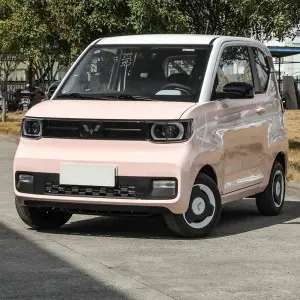New energy has two definitions and classifications: old and new;
Old definition: The country’s earlier definition of new energy refers to the use of unconventional energy vehicle fuel as a power source (or the use of conventional vehicle fuel or commonly used new vehicle power devices), integrating new technologies in vehicle power control and drive, The formation of vehicles with advanced technical principles, new technologies, and new structures. The old definition of new energy vehicles is classified according to different power sources. There are four main types as shown below:
New definition: According to the “Energy Saving and New Energy Vehicle Industry Development Plan (2012-2020)” promulgated by the State Council, the scope of new energy vehicles is clarified as:
1) Hybrid electric vehicle (requires a single pure electric mileage of not less than 50km/h)
2) Pure electric vehicles
3) Fuel cell vehicles
Conventional hybrid vehicles are classified as energy-saving internal combustion engine vehicles;
Classification of new energy vehicles and energy-saving vehicles
Therefore, the new definition believes that new energy vehicles refer to vehicles that use new power systems and are driven entirely or mainly by new energy sources (such as electricity and other non-petroleum fuels).
The following are the classifications of new energy vehicles:
Classification of new energy vehicles
Hybrid vehicle definition:
Hybrid electric vehicles are also called compound electric vehicles. Their power output is partially or completely provided by the internal combustion engine on the vehicle, and is divided into weak hybrid, light hybrid, medium hybrid and heavy hybrid according to their dependence on other power sources (such as electric sources). Full hybrid), according to its power output distribution method, it is divided into parallel, series and hybrid.
New energy range-extended hybrid vehicles:
It is a charging system that installs an internal combustion engine as a power source on a pure electric vehicle. Its purpose is to reduce the pollution of the vehicle and increase the driving mileage of the pure electric vehicle. Plug-in hybrid vehicles are heavy hybrid vehicles that can be charged directly from an external power source. They also have a large battery capacity and can travel long distances on pure electric power (currently our country’s requirement is to travel 50km under comprehensive operating conditions). Therefore, It relies less on internal combustion engines.
New energy plug-in hybrid vehicles:
In plug-in hybrid power, the electric motor is the main power source, and the internal combustion engine is used as backup power. When the power battery energy is consumed to a certain extent or the electric motor cannot provide the required power, the internal combustion engine is started, driving in hybrid mode, and driving in time. Charging batteries.
New energy hybrid vehicle charging mode:
1) The mechanical energy of the internal combustion engine is converted into electrical energy through the motor system and input into the power battery.
2) The vehicle decelerates, and the kinetic energy of the vehicle is converted into electrical energy and input into the power battery through the motor (the motor will act as a generator at this time) (i.e., energy recovery).
3) Input the electric energy from the external power supply into the power battery through the on-board charger or external charging pile (external charging).
Pure electric vehicles:
A pure electric vehicle (BEV) refers to a vehicle that uses a power battery as the only on-board power source and an electric motor to provide driving torque. It can be referred to as EV.
Its advantages are: no emission pollution, low noise; high energy conversion efficiency and diversification; use and maintenance are simpler than internal combustion engine vehicles, hybrid vehicles and fuel cell vehicles, with fewer power transmission parts and less maintenance work. In particular, the electric motor itself has a wide range of uses and is not easily affected by the environment in which it is located, so the service cost and usage cost of pure electric vehicles are relatively low.
Post time: Jan-16-2024




